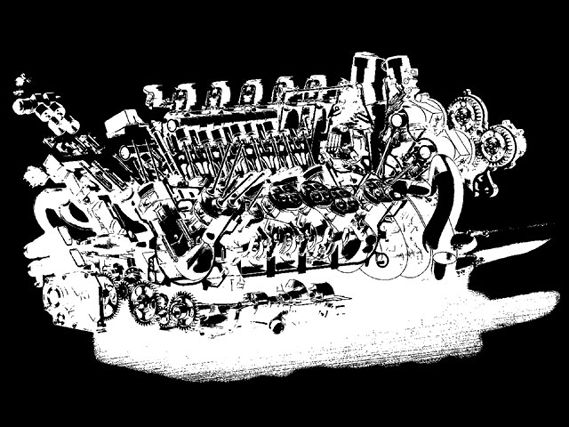 | Readers' Questions - Question It
| Readers' Questions - Question It
Who's your daddy? Not us, that's for sure-we'll even hire lawyers to prove it! But Eric Hsu, on the other hand, just might be. And like any good father figure, he'll teach you the ways of the world through tough love. Tell Eric where it hurts, little guy...he'll make it all better.
For questions, or problems of your own, email them to [email protected].
Importing Tuners
I'm interested in buying a JDM Honda Integra (DC5), but I'm having a tough time finding resources on how to go about buying and importing one. I'd appreciate any info and advice you could give me. Thanks for the help.
--Don, from Boston
Importing a car from Japan is tricky business. There are correct ways to bring a car in from another country, methods that are in the grey, and just flat-out incorrect ways. The correct ways can be confusing and difficult for the average Joe to accomplish, and are definitely NOT cheap.
Your case might be a bit easier, since the DC5 chassis already exists here in the states. If you are planning to bring the car in as a race car, then it should be much easier because you can do it under the guise of a spare parts car-one that can never be used on the highway. At any rate, it is always better to purchase the car from a reputable U.S. importer who has gone through the process before, because they will have contacts who can locate and purchase a car in Japan, and can package, ship, and clear the car through U.S. Customs. The red tape of getting the car through Customs and being certified for road use is best cut by a certified importer-trust me. The last thing you would want is for U.S. Customs to confiscate your car and crush or auction it off, leaving you with absolutely ZERO to show for all your time and money-happens all the time.Try contacting Daryl Allison at Kaizo Industries, who brings in a fair amount of Skyline GT-Rs and R35 GT-Rs, or Sean Morris at RB Motoring who is very knowledgeable on the subject. And most importantly, beware of the shady "businesses" all over the forums that make false promises. If the price is too good to be true-it is!
Sticking With The Autostick
I just recently purchased an '03 G35, complete with headers, a full exhaust, and an intake. It's an automatic, but has the Autostick option as opposed to an old-fashioned slush-box. Do you think that it would hold up under the abuse of turbocharging? I read your response to a question a few months back where you said that adding a turbo or supercharger could cause problems to an automatic. Any advice that you could give would be greatly appreciated.
--Francisco Mari, Baltimore, Md.
Some auto transmissions respond better than others, depending on factors such as durability and strength, OEM transmission programming, and valvebody and torque converter configuration. In most applications, the addition of a turbo will completely change the torque delivery characteristics of your engine, meaning the transmission's management system would need to be modified to compensate; to get shift points and valvebody-line pressures to work well with the engine's new torque delivery characteristics. Since this is fairly expensive to do, I usually advise people to not turbocharge their automatic cars for big power, unless you're prepared to part with big money. The 350Z/G35 Autostick transmissions are a bit stronger than your average import transmission, and their programming works relatively well with the addition of a mild turbo, producing up to 400 whp. Just make sure you add an oil cooler for increased reliability. If you want to turn up the power to 500+ whp, I'd recommend having the transmission built with higher friction clutch packs, a custom valvebody, and a smaller and stronger torque converter. Talk to the people at IPT or Level 10. It's big money, but after all the work, automatic turbo cars can be fast and pretty damn consistent.
 | Readers' Questions - Question It
| Readers' Questions - Question It
Mazda's SR20
I just bought an '89 Mazda 323 a few days ago for 300 bones. The car needs to stay daily-driven for now, until my '98 ITR project car is finished, but afterward I'd actually like to put some effort into making this little turd quicker. It has over 200,000 miles on the ticker, so I'm wondering if any other Mazda engines were available for the car in other markets, or released under other monikers that would swap over. Lemme know what you think.
--James Montgomery, via e-mail
Ahh...the memories. The old school 323s have a B6 engine commonly found in the first-generation Miata. But lucky for you, the B6T is also found in the 323GTX which is a turbo all-wheel-drive version of your 323. If you can locate one of these engines, it will drop right in. If you hit the jackpot and find a harness, ECU, intercooler and sensors, those will also drop right in. A buddy of mine back in the day dropped the whole damn drivetrain from a GTX in his 323 and smoked countless 5.0s. Use the transmission and flywheel from your current 323 engine and an ACT clutch and you can have a decently quick, front-wheel-drive turbo car, disguised as the turd it is right now.
Lowrider
I have a Japanese AE110 Corolla and am having a hard time finding lowering springs for it. I hear the AE101 springs can work, but I can't find any of those either-but is that true? One person told me to cut two coils off to get the height that I want...but I don't want to go ghetto-style and ride on bumpstops all day. Another idiot told me to heat them until they compress to the desired height, and that doing so would keep spring rates the same. I have a feeling both these jackasses are F.O.S.-are they? Is there an easy fix here?
--Terrence Harrigan, Lost in the Caribbean
I don't know much about Corollas after the AE86, but I can tell you this for any car: DO NOT torch the springs! I remember back when fools would roll up to the muffler shop where I used to wrench-cutting out cats or making exhausts on the side...shh, don't tell the EPA-and have a guy there heat their cars' springs to lower ride height. I remember it was never possible to get each spring to sit at the same height, and the guy I worked with even told me they'd all be back after 500 miles or so, once their springs eventually broke. You could cut your springs, but even then there's a good chance your car won't sit right, and will definitely bottom-out. Get yourself a set of TEIN or Tanabe lowering springs and do it right the first time. Just make sure you have a new set of shocks to go with them, or you might end up bumping up and down over potholes like a '72 Cadillac.
